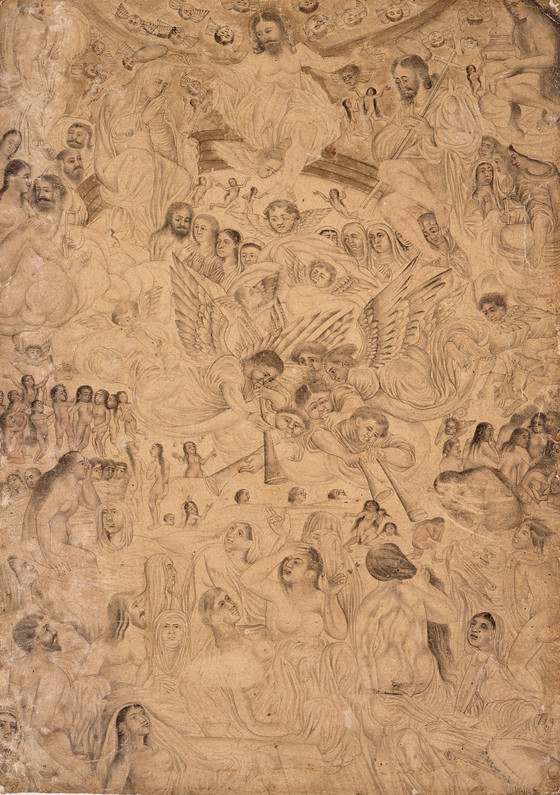According to Christian doctrine, The Last Judgment will occur at the end of the present era when there will be a resurrection of the dead of all mankind....
According to Christian doctrine, The Last Judgment will occur at the end of the present era when there will be a resurrection of the dead of all mankind. The living and the dead will be judged by their charitable deeds and consigned consequently to heaven or hell. There are numerous scriptural references, but the principal authority is Christ’s discourse to his disciples in Matthew (25:31-46).
This lightly tinted drawing of The Last Judgment is based closely on an earlier composition by Johannes Stradanus (1523-1605), a Flemish painter and print designer active mainly at the Medici Court in 16th-century Florence, Italy. It was engraving in circa 1580 or circa 1590 by the Flemish printmaker Adriaen Collaert (1560-1618). See impressions in the Art Institute of Chicago (2023.1068), Albertina Museum, Vienna (H/I/23/136), British Museum, London (1868,0612.432), Museum Boijmans Van Beuningen, Rotterdam (BdH Boek FA 53 10426 (PK)), Rijksmuseum, Amsterdam (RP-P-1982-305), and Royal Library of Belgium, Brussels (S.II.10953).
In the top center of the drawing, Jesus Christ is seated on the arc of a rainbow and flanked by the Virgin Mary and St John the Baptist bearing the Cross. Beneath them is a bank of clouds with angels blowing trumpets to raise the dead. Along the bottom and sides are representations of the dead emerging from their tombs and from the sea. The LACMA drawing incorporates almost all the original’s figures in the same or approximate posture, but their proportions within the identical composition differ slightly. Some of the faces have been reinterpreted with Indianized facial features, hairstyles, and head coverings.
See Stephen Markel, ""Same Template, Different Responses: Two Mughal Reinterpretations of a Flemish Print," Asianart.com https://asianart.com/articles/last_judgment
More...



